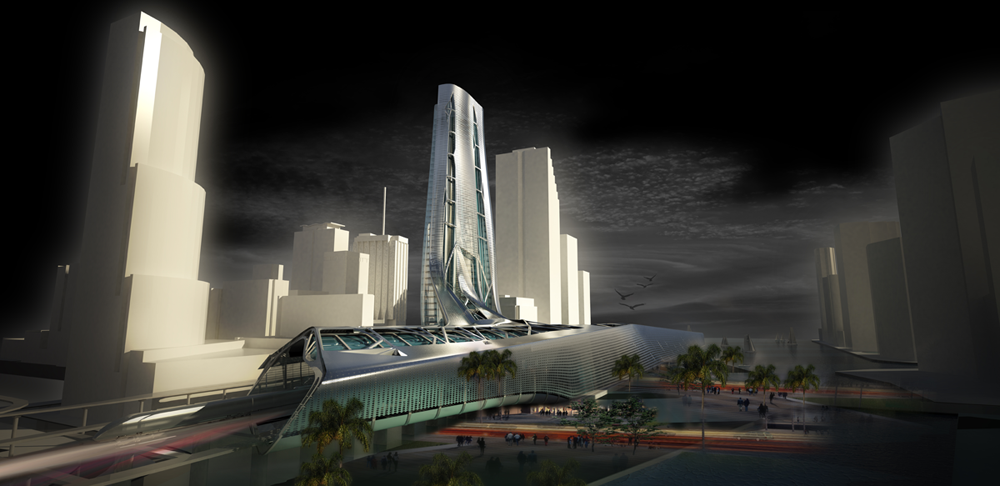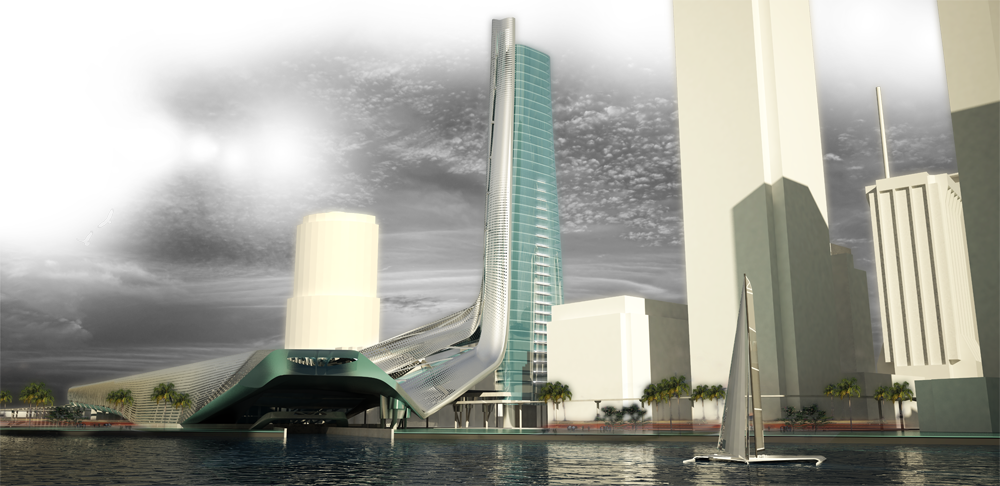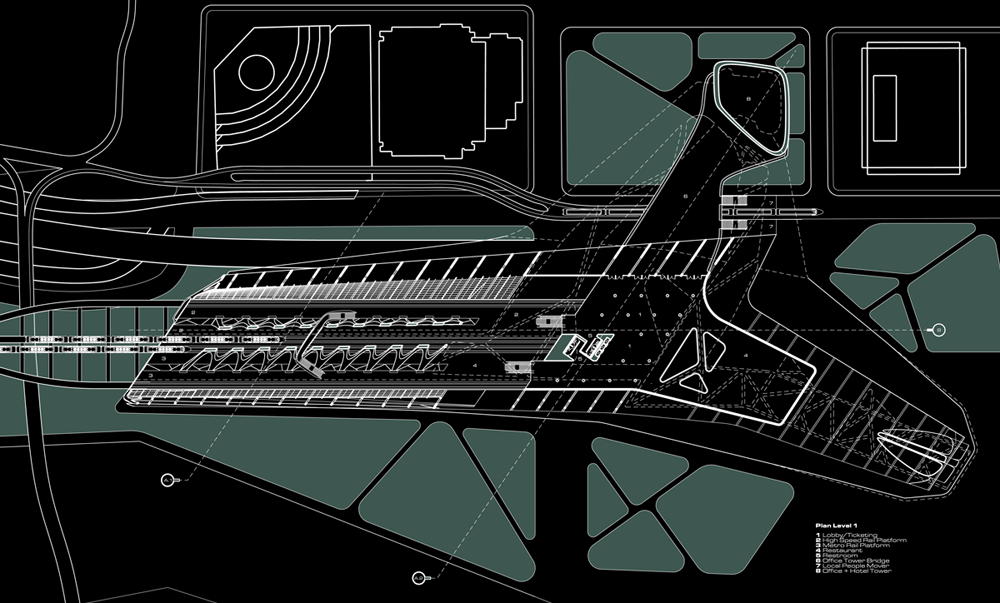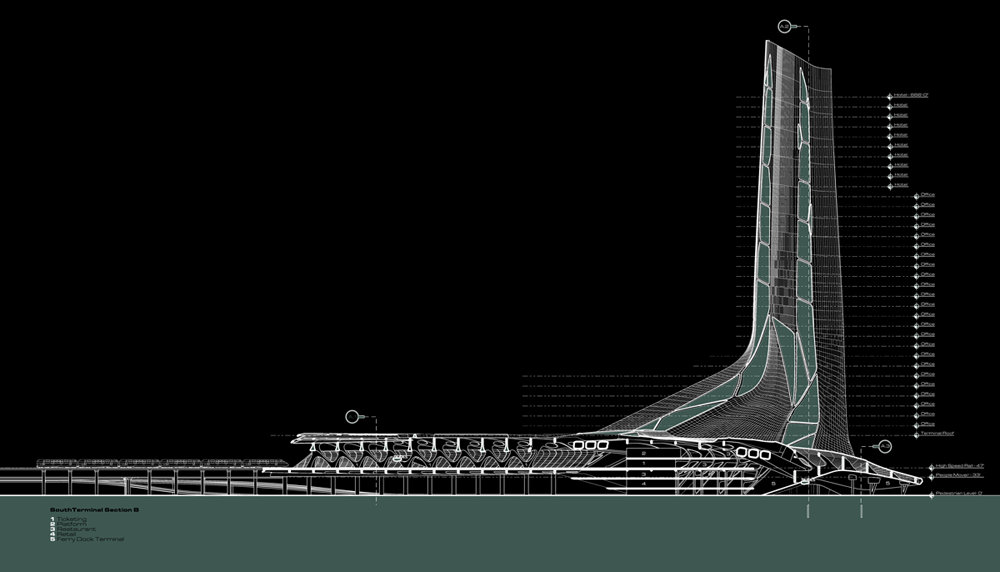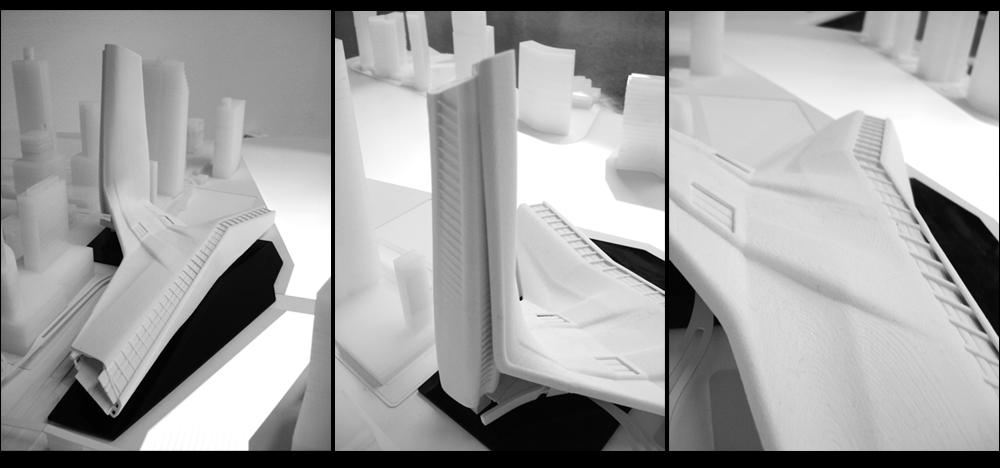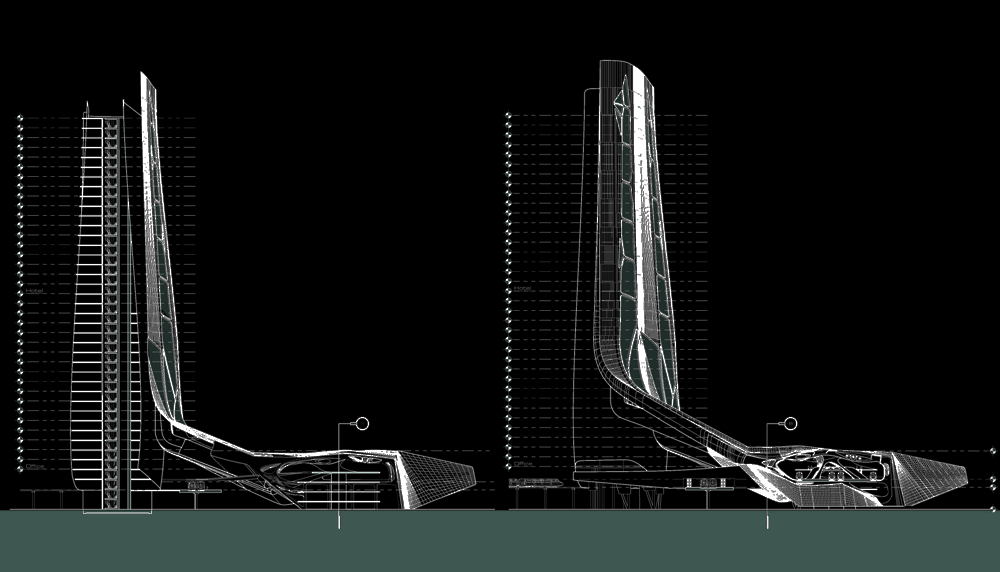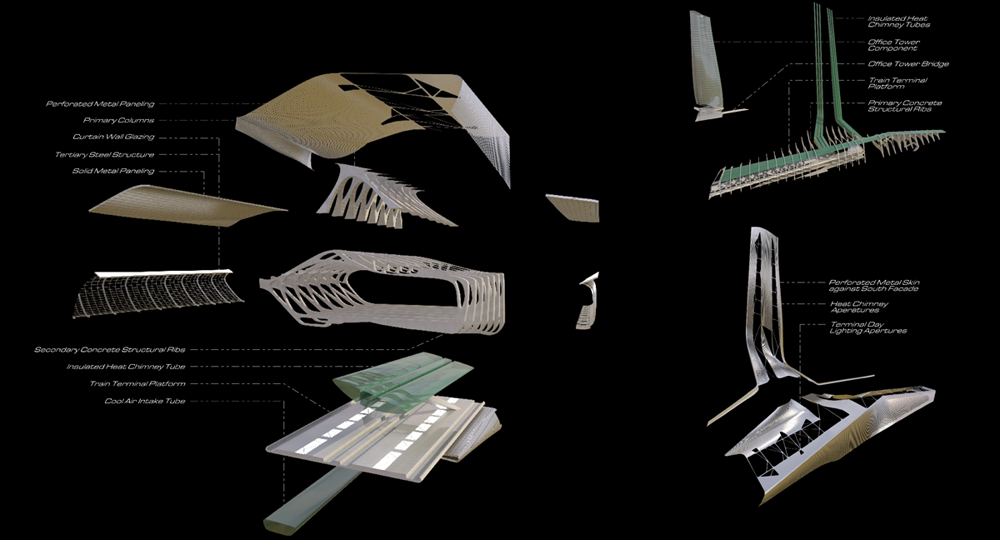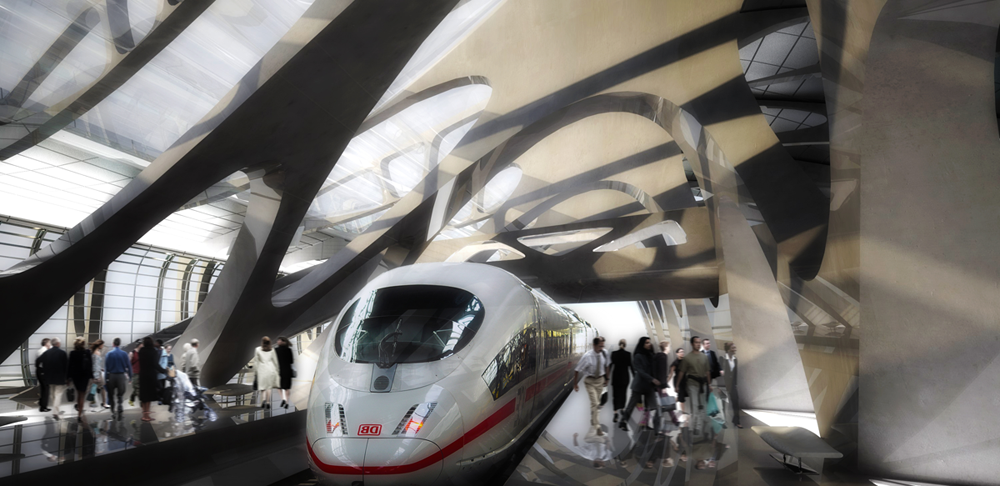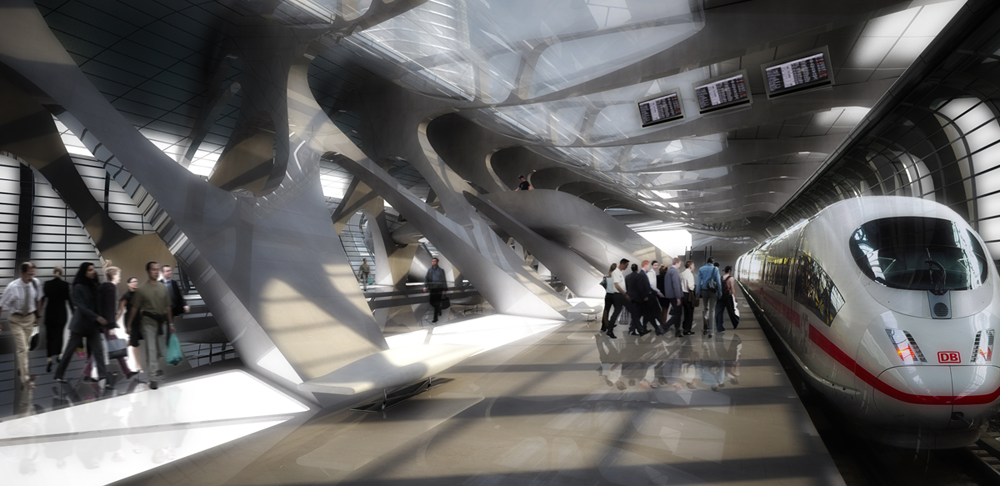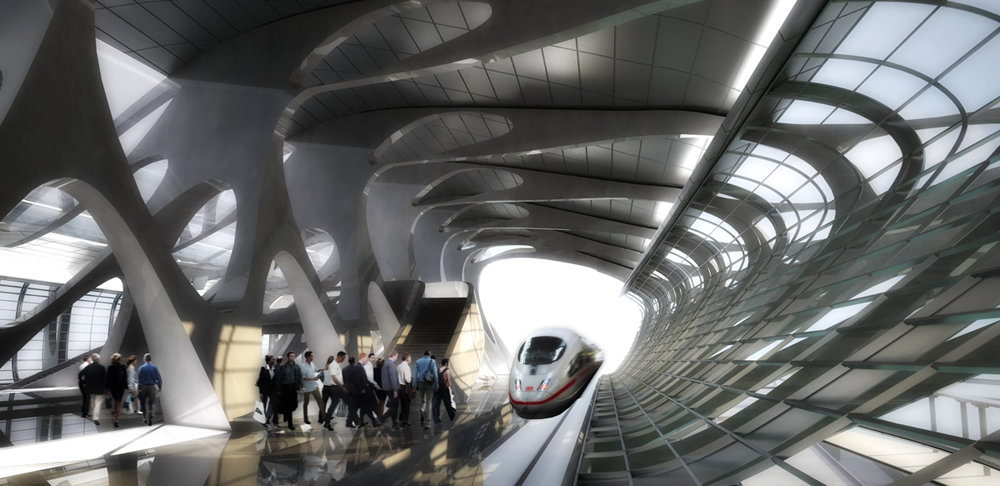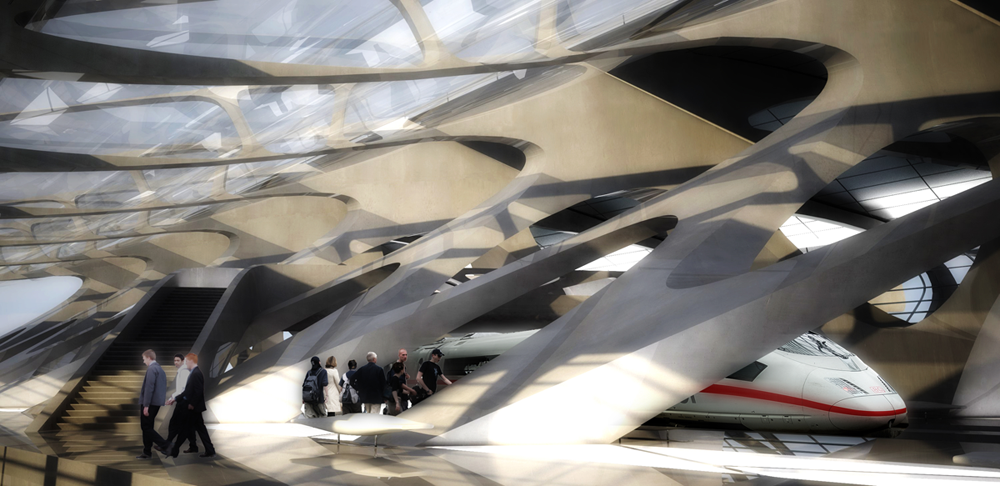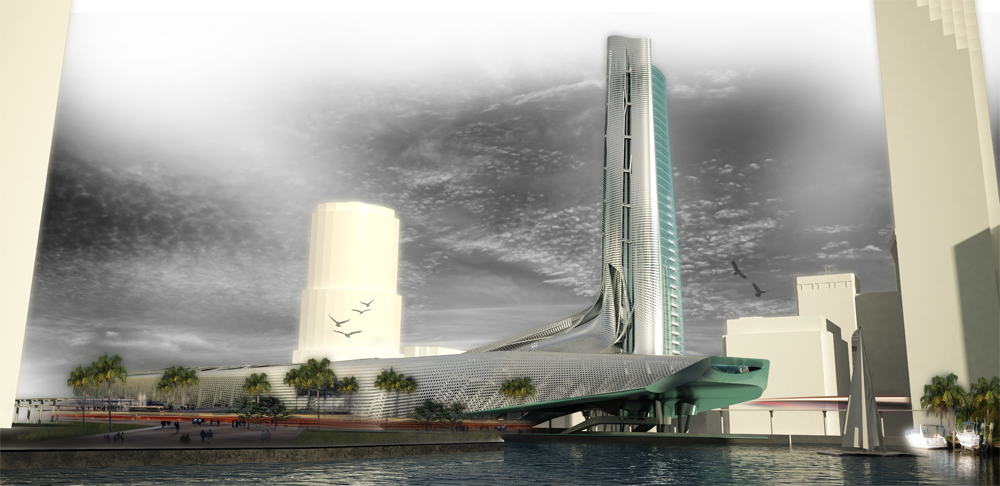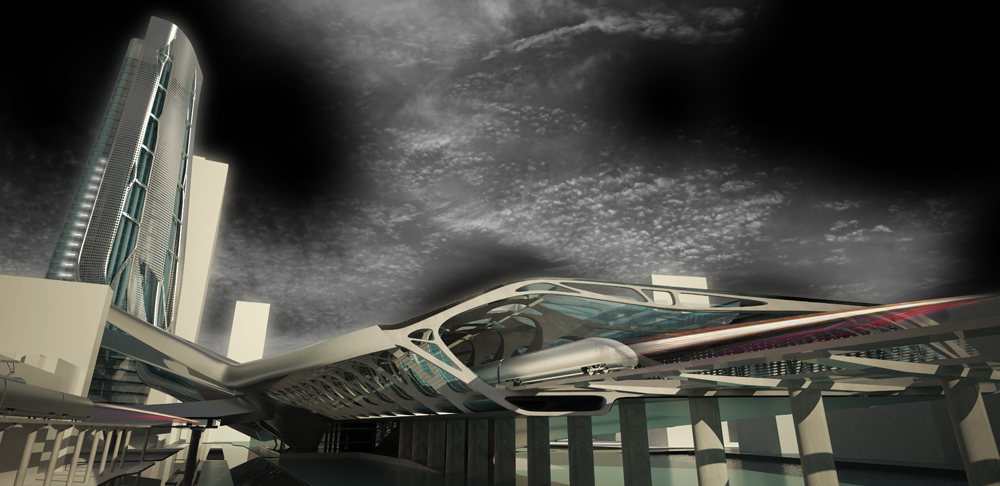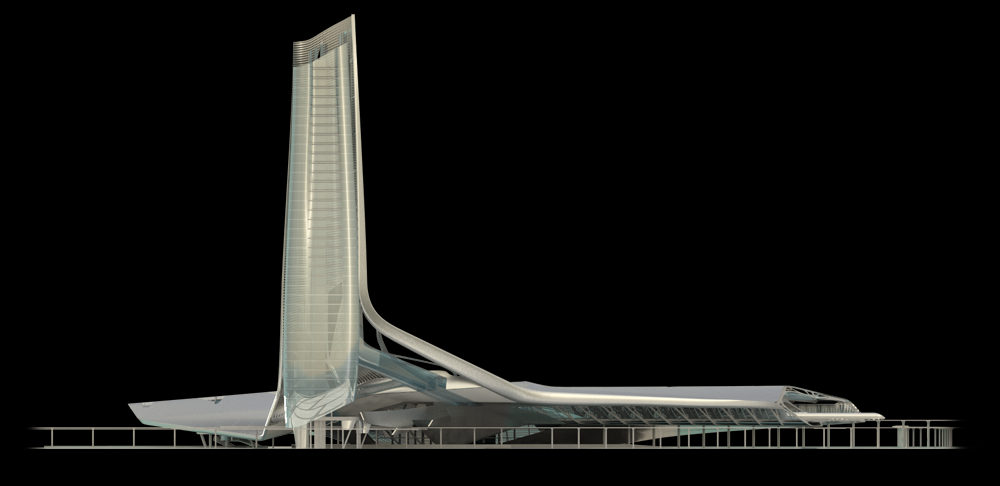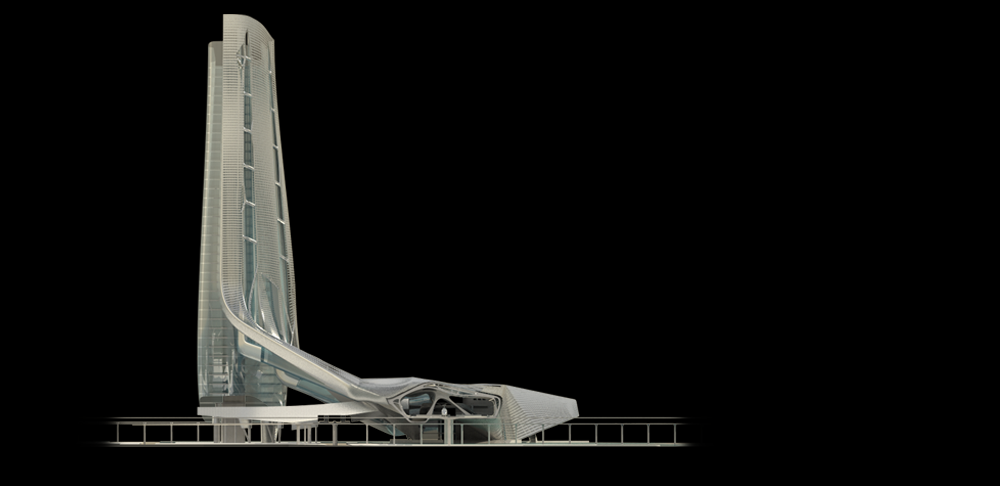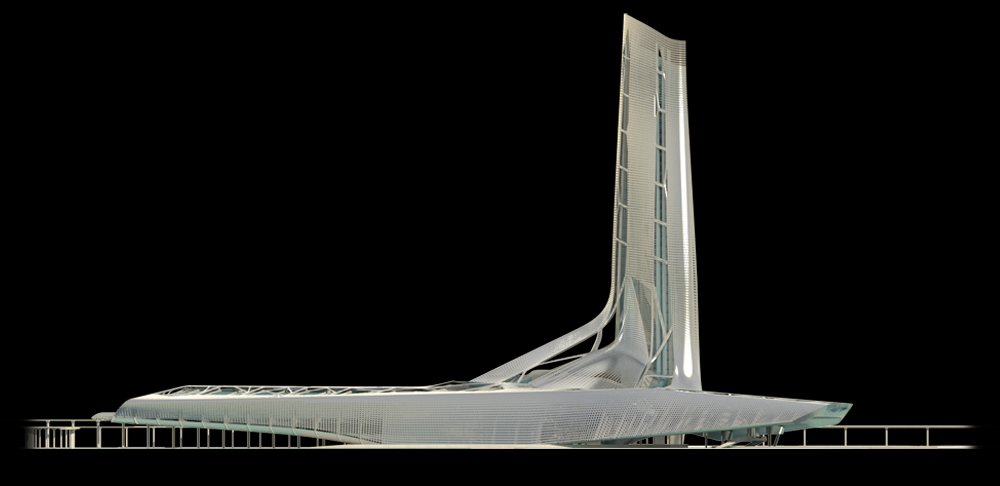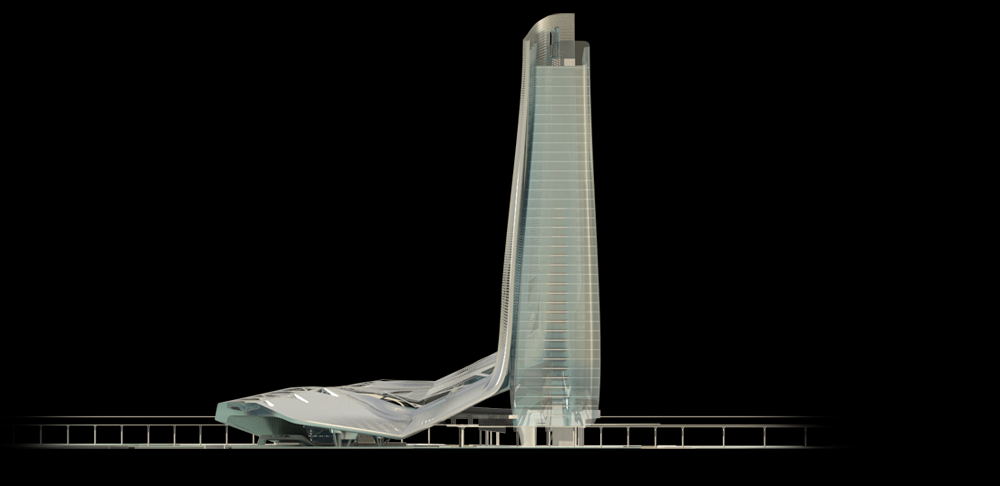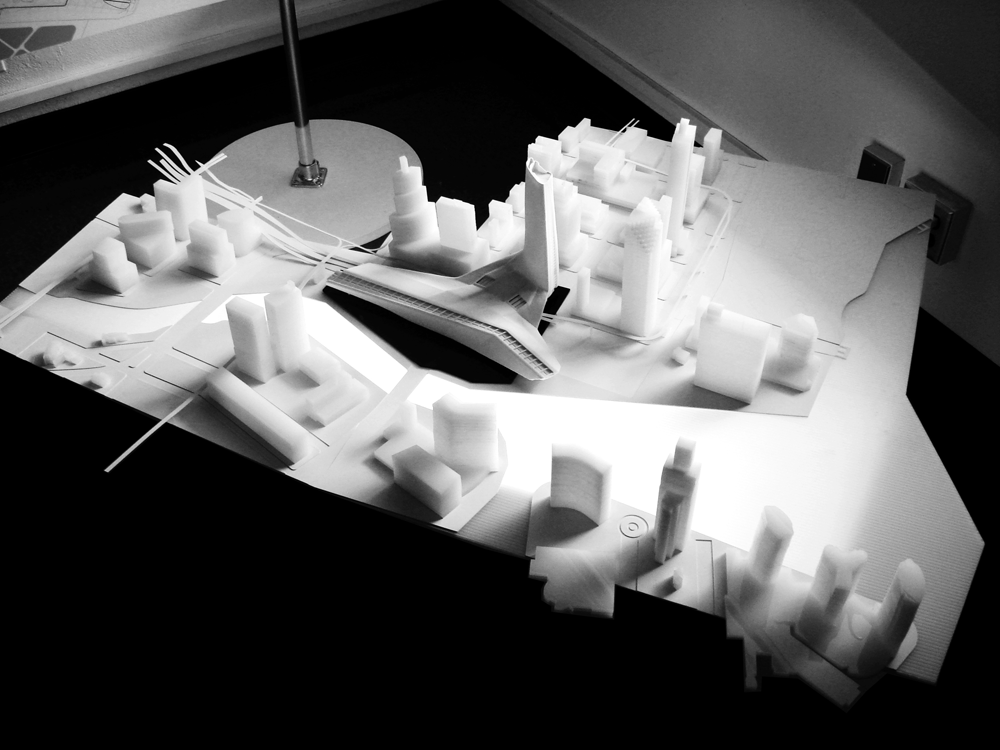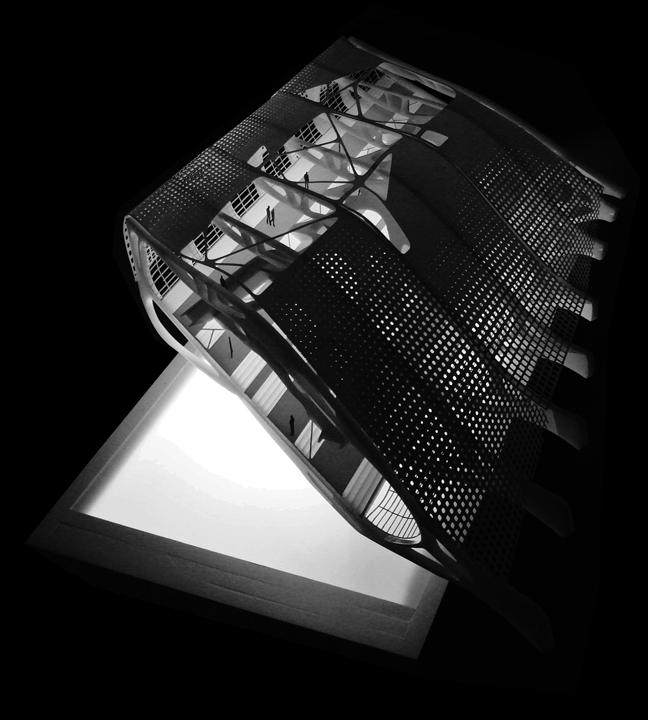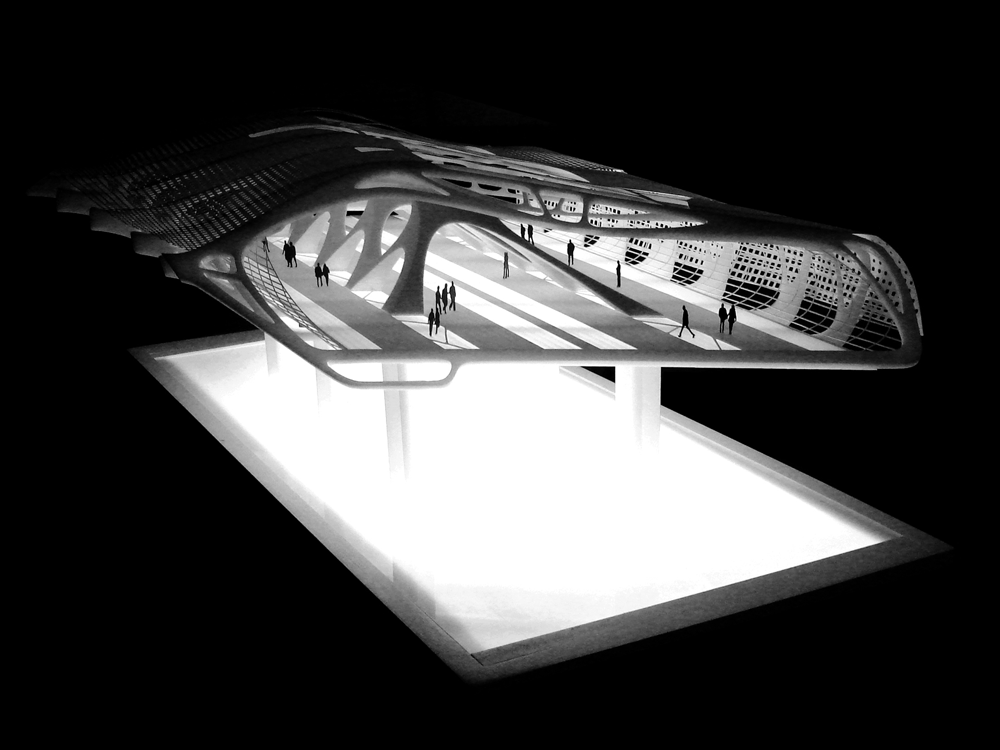Urban Anatomy
UCLA 2010, Professor: Michael Ra, Team: Matthew Goldsberry + Harlen Miller
______________________________________________________________________________________________________________________________________________________________________
Program: High Speed Rail Terminal
Location: Miami, FL
Size: 750,000 SF
The Miami High Speed Transit Terminal is a proposal to bring high speed rail into the downtown center of Miami. The proposal is to construct a transit center within the downtown waterfront which simultaneously serves as a train terminal, ferry dock and public green space along the water front, with an adjacent commercial office tower. The goal for the project is to combine the program with an environmentally influenced approach. The train terminal and ferry dock contain large spaces where air-conditioning is un-economical, so alternative cooling methods are explored. Due to the high level of humidity in Miami, many passive methods of cooling such as adding water into the air to cool it, no longer become effective. The solution is to keep the air in a constant state of movement, alleviating any stagnant hot air.
In order to achieve the ventilation requirements on a large scale, a solar chimney is proposed at the base of the office tower. The solar chimney will consist of large tubes that run down the spine of the train terminal and ferry dock. The tubes collect solar heat gain and with the assistance of vent fans exhaust the rising hot air from the terminal, creating a drag current throughout the station. The materiality of the tubes consist of glass on the top portion in order to collect maximum heat radiation. The underside of the tube will be a reflective R-Rated material to keep the heat transfer from entering into the occupiable space. The tubes will be positioned on the south facing portion of the roof to achieve maximum natural day lighting and solar heat gain. Intermittent air intakes will be positioned along the tubes, creating an even current of air throughout the terminal as it moves from a low pressure zone to a high pressure zone along the facade of the office tower. The increased height of the tower not only contributes to the downtown leasable footage but is needed to create a greater turbulent flow of air as the heat rises through the chimney stack.
The environmental design of the terminal must address two main seasons of Miami climate; humid summers and dry winters. During the summer months air that is drawn into the unconditioned portioned of the terminal will pass through tubes on the underside of the terminal, not exposed to radiant heat before entering into the occupiable space and dropping the temperature. During the dry winter months water can be added back into the air to increase the comfort level.
